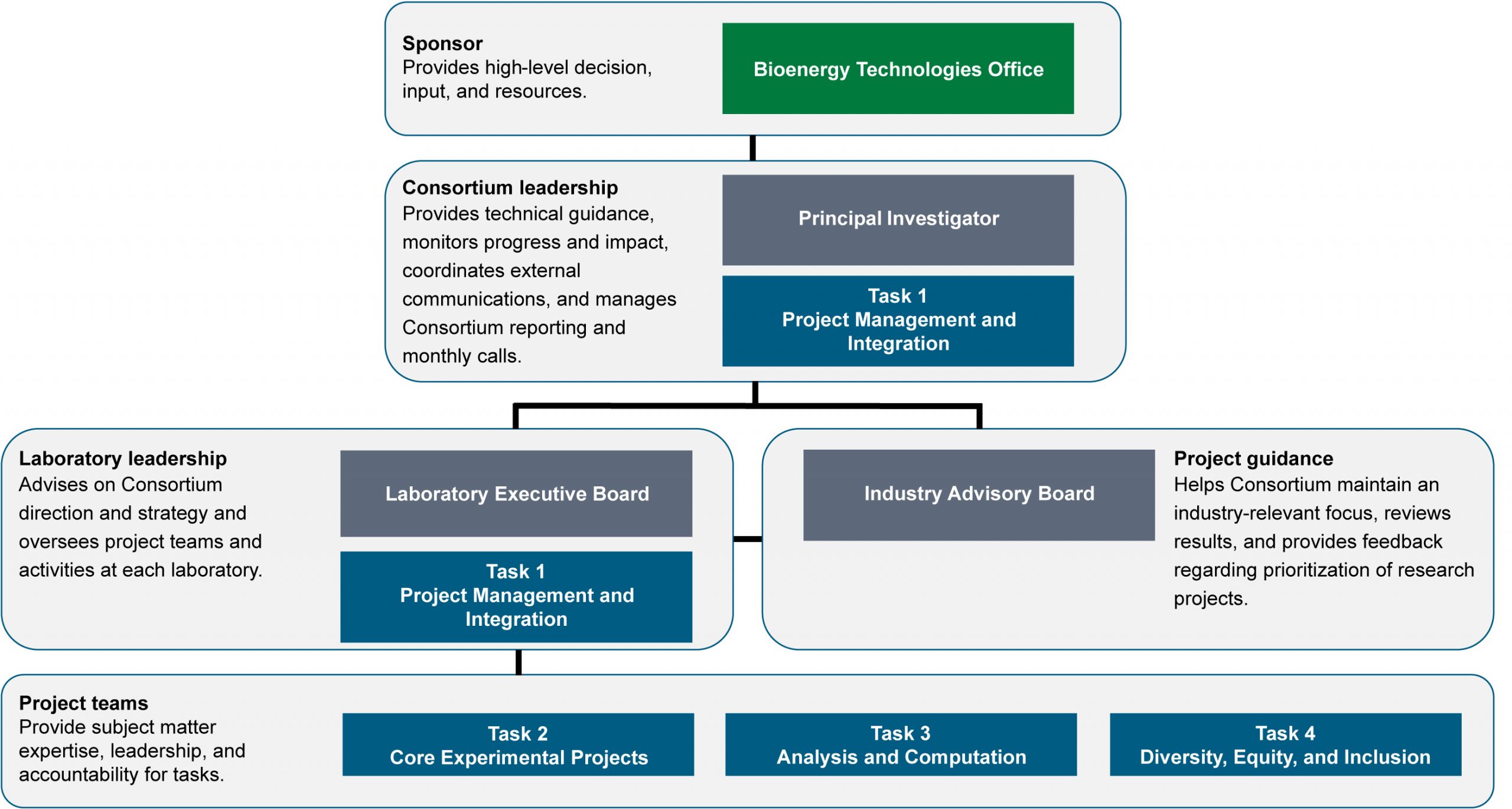The technical challenges in bioprocessing separations are as varied and diverse as the different types of biomass, conversion routes, and target products. In addition, biomass deconstruction produces chemically complex mixtures and desired products are often at low concentrations in aqueous streams. Finally, bioprocessing separations are significantly less mature than industrial separations that are well-established in the petrochemical industry, and there is a lack of heuristics or baselines to help guide separations approaches.
In 2016, the U.S. Department of Energy’s Bioenergy Technologies Office established the Bioprocessing Separations Consortium to address both the technical challenges related to bioprocessing separations and stakeholder feedback that separations challenges preclude the cost-competitive production of biofuels and bioproducts. The goal of the Bioprocessing Separations Consortium is to develop separations technologies that are cost-effective, high-performing, and scalable through coordinated research at the National Laboratories.
Guided by an Industrial Advisory Board to develop and maintain and industrially-relevant research portfolio, the Consortium is organized into four tasks: 1) Project Management and Integration, 2) Core Experimental Projects, 3) Analysis and Computation, and 4) Diversity, Equity, and Inclusion.
The Project Management and Integration task includes the Principal Investigator and a Laboratory Executive Board. The Core Experimental Projects encompass the development of new capabilities including separation technologies and materials for product recovery and process intensification. The crosscutting analysis team is integrated with the technology research teams to conduct techno-economic and life-cycle analyses to inform research directions and project milestones. Proposed separations strategies and results are incorporated into Design Cases for different conversion routes that are under study at the National Laboratories to estimate each project’s economic and sustainability impacts.
The Consortium’s research portfolio is also engineered to addresses the needs and interests of other BETO consortia, including ChemCatBio, the Agile BioFoundry, Co-Optima, and the Consortium for Computational Physics and Chemistry, through our BETO collaborative projects.

